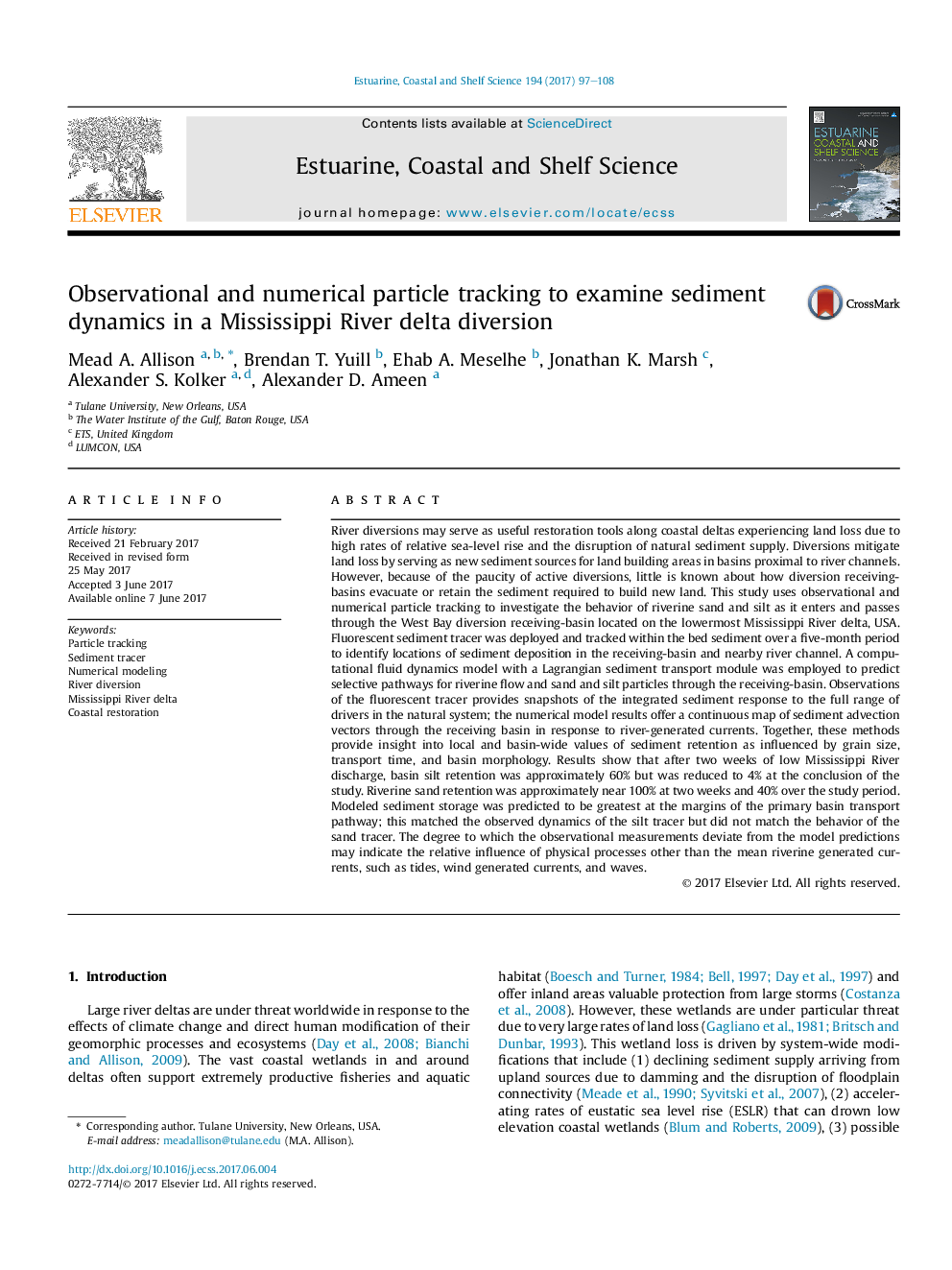| Article ID | Journal | Published Year | Pages | File Type |
|---|---|---|---|---|
| 5765089 | Estuarine, Coastal and Shelf Science | 2017 | 12 Pages |
Abstract
River diversions may serve as useful restoration tools along coastal deltas experiencing land loss due to high rates of relative sea-level rise and the disruption of natural sediment supply. Diversions mitigate land loss by serving as new sediment sources for land building areas in basins proximal to river channels. However, because of the paucity of active diversions, little is known about how diversion receiving-basins evacuate or retain the sediment required to build new land. This study uses observational and numerical particle tracking to investigate the behavior of riverine sand and silt as it enters and passes through the West Bay diversion receiving-basin located on the lowermost Mississippi River delta, USA. Fluorescent sediment tracer was deployed and tracked within the bed sediment over a five-month period to identify locations of sediment deposition in the receiving-basin and nearby river channel. A computational fluid dynamics model with a Lagrangian sediment transport module was employed to predict selective pathways for riverine flow and sand and silt particles through the receiving-basin. Observations of the fluorescent tracer provides snapshots of the integrated sediment response to the full range of drivers in the natural system; the numerical model results offer a continuous map of sediment advection vectors through the receiving basin in response to river-generated currents. Together, these methods provide insight into local and basin-wide values of sediment retention as influenced by grain size, transport time, and basin morphology. Results show that after two weeks of low Mississippi River discharge, basin silt retention was approximately 60% but was reduced to 4% at the conclusion of the study. Riverine sand retention was approximately near 100% at two weeks and 40% over the study period. Modeled sediment storage was predicted to be greatest at the margins of the primary basin transport pathway; this matched the observed dynamics of the silt tracer but did not match the behavior of the sand tracer. The degree to which the observational measurements deviate from the model predictions may indicate the relative influence of physical processes other than the mean riverine generated currents, such as tides, wind generated currents, and waves.
Keywords
Related Topics
Physical Sciences and Engineering
Earth and Planetary Sciences
Geology
Authors
Mead A. Allison, Brendan T. Yuill, Ehab A. Meselhe, Jonathan K. Marsh, Alexander S. Kolker, Alexander D. Ameen,
